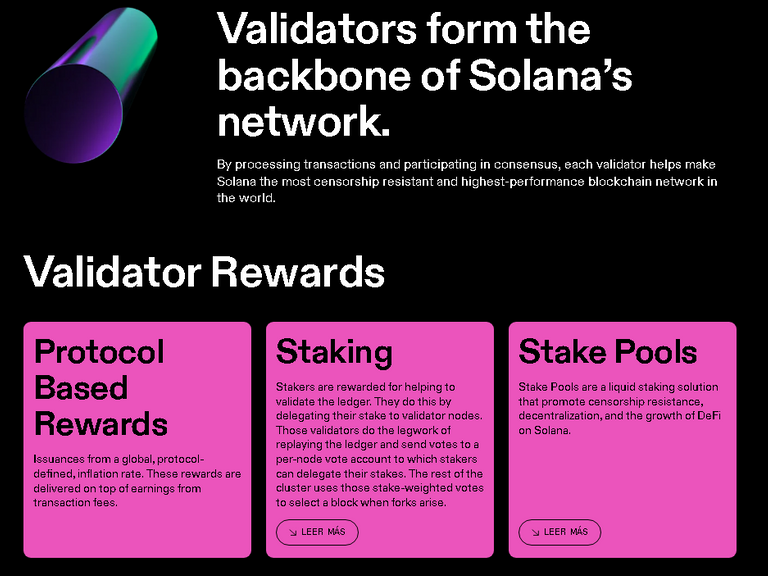
For this reason, I want to start sharing my experience and helping others in the same way that I have found great satisfaction with crypto.
So we will start today with two fundamental concepts to understand this wonderful world: What are Blockchains and consensus protocols?
First of all, a Blockchain is a gigantic library that stores information (of any kind) in the form of a ledger that is public, unalterable, and verifiable over time.
The way in which the information is stored is in the form of blocks that are interlinked with each other, keeping a close relationship between the previous and successive blocks, thus ensuring the inalterability of the information. Imagine a large chain composed of blocks, and each block contains a specific information.

From this quality comes the name Blockchain = Chain made of blocks of information.
One of the basic qualities that make the blockchain what it is is Decentralization... without this quality, the blockchain would be an internet site like many others.It is the quality of decentralization that allows the security, participation, freedom and inclusion of the Blockchain.
As I mentioned before, the Decentralization of the Blockchain is what makes it something new and special. This concept basically means that information is not stored uniquely or arbitrarily by a single server, but is verified by several individuals called nodes. In this way, security is guaranteed, since it is virtually impossible to hack. In other words, if someone wanted to modify the information in a block they would theoretically have to hack each of the nodes that verify the information at the same time... this is impossible.Now, a logical problem arises from decentralization: How can we make dozens of Nodes communicate with each other and reach an agreement or consensus to verify and archive the information?... this is where the consensus protocols come in.
The consensus protocol refers to any type of computer or cryptographic mechanism that allows nodes to compare new information to be added to the chain, verify it in light of previously stored blocks, and then approve it for permanent addition.In other words, the consensus protocol is the mechanism that regulates the way in which nodes reach an agreement to add new blocks to the chain.
TYPES OF CONSENSUS PROTOCOLS.

1-Proof of Work (PoW)
It is the oldest and therefore one of the most recognized as it is the protocol currently used by the Bitcoin Network. Its mechanism is based on performing complicated mathematical operations through special computers (mining machines) with a lot of computing power.The node that deciphers the operation correctly and fastest will be awarded the honor of verifying the block and adding it to the chain. It also receives a reward in network tokens.
As already said this type of protocol needs a great computing power and therefore a great consumption of electrical energy, therefore it has a marked impact on the environment.
2-Proof of Stake (PoS)
It is the second best known protocol for being employed by the Ethereum Network.Unlike Proof of Work, it does not require special equipment or solving complicated mathematical problems, only possession of a large amount of the Network's native token. In this protocol, the process of block allocation is done between the nodes that have the largest number of staked tokens.
The greater the number of tokens, the greater the probability of receiving a block for verification and sealing.
The advantage of this mechanism is that it does not impact the environment as much, although a negative feature in my opinion is that it is not very participatory, since only those who own more are those who have greater rights.3-Delegated Proof of Stake (DPoS)
In it, the users of the network elect Witnesses who, through their reputation and their service to the network, gain fame among the people.
These witnesses are in charge of validating the blocks through a selection system that is given by the amount of participation that users delegate to them.
The advantage I see in this type of mechanism is that it is more participatory and decentralized, since even users with a small amount of tokens can participate in the network.
4- Proof of authority (PoA)
This is a type of protocol mostly used in private Blockchains, in which the block validation process is assigned to a Node called Validator, which is chosen based on trust, honesty and image of the person.
In other words, a validator makes his identity public, so that it is his image that is at stake in the validation process, and therefore protects the network from any tampering in the process.
The advantages of this protocol are that it is faster and therefore its scalability is greater, but it does so by sacrificing decentralization.5-Proof of elapsed time (PoET)
This protocol is based on a lottery system that randomly assigns the right to add a block to the chain in equal probability. Therefore each node has the same probability of winning.
The algorithm of this mechanism generates a random waiting time for each node, in which the node with the shortest waiting time will be assigned the next block while the other nodes enter a suspension period.
This period of suspension of the remaining nodes results in lower power consumption within the network since only the node selected with the shortest waiting time will be in operation.
This protocol is also an advantage in terms of participation and decentralization since each node is given the possibility to participate.
Why do I think it is important in the blockchain?
If it were not for the consensus protocols, the process of block verification and sealing would definitely be a complete chaos, resulting in the fact that no Blockchain network would be viable or at least not useful, since the decision making process for the verification of the information would take hours or even days.
In addition, the consensus protocol is a fundamental piece in the security of any blockchain, as it controls the way in which all users participate in the network and unanimously accept the information that is added to the chain.It is thanks to the consensus protocols that today we can securely exchange money or crypto-assets through blockchain networks.
Without decentralization, there can be no Blockchain. And the way we guarantee decentralization is through a consensus protocol in which randomly assigned (or rewarded) nodes are in charge of verifying, sharing information with all the nodes, and then adding them to the main chain.
The consensus protocol is the mechanism by which the network ensures that all nodes share information with each other and is unalterable. Without a consensus protocol, it would be impossible to relate the different nodes in a correct way.I honestly do not know of a term similar or equivalent to the consensus protocol or at least something that fulfills the same function.
Rather we could say that the term Consensus Protocol can evolve in the different names that the developers put them, such as Proof of work or proof of stake, or Byzantine Fault Tolerance (BFT) ... however in essence they all fulfill the same function: to generate a mechanism for consensus of information between the nodes that make up a blockchain.
So what’s next?
Something fun about it, is that all consensus protocols are an improvement of their predecessors. For example the Proof of stake is an improvement of Proof or work, since it improves scalability and verification times by randomly allocating the block among those users with higher token retention instead of waiting for the resolution of mathematical problems through equipment with high power consumption.
On the other hand, the Proof of Stake protocol had some shortcomings in terms of its lack of decentralization and participation, so the developers came up with a solution in the Delegated Proof of Stake.Through it, block allocation times were reduced and a greater number of people were able to participate.
Hybrid Consensus Protocols
Some networks are currently working on even more revolutionary improvements, such as the so-called Hybrid Consensus Protocols, which seek to have greater participation and greater scalability without saturating the main network.
One of the most notable cases of hybrid protocols is that of the Solana Network, which works through the union of two consensus protocols, Proof of history (PoH) and Proof of Stake (PoS).
In the first place, the PoH verifies the network transactions, and on the other hand, the PoS validates the sequences introduced by the PoH.
And this is just a sample of improvements that occur day after day in terms of consensus protocols.The consensus protocols are what allow the development of the Blockchain, in fact, somewhere I read that consensus protocols are the root of blockchain technology. There would be no blockchain without decentralization, and there would be no true decentralization without consensus protocols.
The main idea behind the Blockchain is the fight against centralization and definitely, that fight could not be won if it were not for consensus protocols.
I hope this post has been to your liking and I hope to continue contributing even more to this community.
Posted Using LeoFinance Beta
Congratulations @allbert! You have completed the following achievement on the Hive blockchain and have been rewarded with new badge(s):
Your next target is to reach 30 posts.
You can view your badges on your board and compare yourself to others in the Ranking
If you no longer want to receive notifications, reply to this comment with the word
STOPTo support your work, I also upvoted your post!
Support the HiveBuzz project. Vote for our proposal!
thank you my friends
You're welcome @allbert, nice achievement!
BTW, we need your help!
May we ask you to support our proposal so our team can continue its work?
You can do it on Peakd, ecency, or using HiveSigner
https://peakd.com/me/proposals/199
Your support would be very helpful.
Thank you!
done my friends
Posted Using LeoFinance Beta
done my friends
Posted Using LeoFinance Beta
Thank you for your support @allbert, much appreciated!